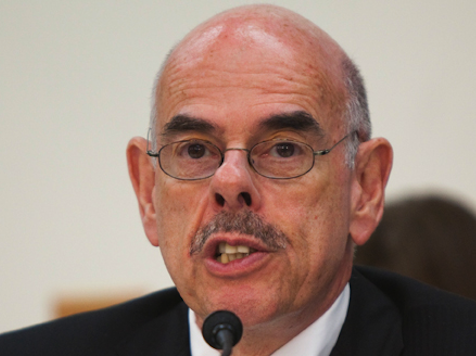It seems almost impossible to think that retiring Rep. Henry Waxman, a one-man liberal institution who has represented the west side of Los Angeles for forty years, could fail to be succeeded by a fellow Democrat. Yet that is precisely what could happen in the 33rd congressional district, where a staggering 18 candidates–ten Democrats, three Republicans, one Green, one Libertarian, and three independents–will appear on the June 3 primary ballot.
In the “jungle primary” system, the top two finishers in the primary qualify for the general election in November regardless of party. In several previous election cycles, that has meant that two Democrats or two Republicans face off in November. Occasionally, it has also meant that candidates from a dominant party–often Democrats–have split the vote between them, allowing those of a minority party–usually Republicans–to advance and win.
In the 33rd congressional district, the latest statistics indicate that nearly 44% of the voters are registered as Democrats, and 27% are registered as Republicans. Of the remaining 29%, fully 18% declined to state a party preference and the rest supported small parties. Typically, the “no party preference” voters tend to “break” to one of the major parties. So we might expect to see something like a 60-30 Democrat-Republican final split.
However, this year there is a very strong independent candidacy–that of Marianne Williamson, who is not only the strongest fundraiser but has also claimed a disproportionate share of media coverage and a inspired a large corps of activists and volunteers. She could boost the proportion of independent voters up to about 20% at the polls, many of whom will be Democrats. So the final party split on June 3 could look more like 50D, 30R, 20I. Among those independents, Williamson will dominate, winning most of the 20% who show up at the polls.
The Democrats will be splitting their 50% ten ways, while the Republicans will only be splitting their 30% three ways. (Note that each of the candidates would start with nearly 6% if votes were randomly allocated, meaning that being a Democrat is a disadvantage in Henry Waxman’s district this year, at least in the primary.)
Among those ten Democrats, four have emerged as strong fundraisers and frontrunners: State Sen. Ted Lieu, former L.A. Controller Wendy Gruel, public radio host Matt Miller and public defender David Kanuth. That is still a very divided field. If the remaining candidates only win about 1% to 2% of the vote each, that leaves 40% of the Democratic vote to be split four ways. The leading Democrat would be very lucky to take 20% of the vote.
The Republicans are only split three ways. Prosecutor Elan Carr is the most visible, and was the first candidate of any party to run TV ads. Attorney Lily Gilani is running a real but small campaign, and Kevin Mottus is stuck on the single issue of cell phone radiation. So it seems Carr could win about 20%, conservatively; indeed, that is about where Greuel’s internal poll put him in February. The other two GOPers will share the remaining 10%.
Therefore the likeliest outcome on June 3 is that Williamson and Carr will advance to the general election. A Democrat could still advance, given a very strong turnout effort by only one of the candidates, or a very weak turnout by Carr’s campaign, which has focused more on the “air war” than the ground game. Yet–you read it here first–the likeliest result is that no Democrat will advance. A political earthquake–but a predictable one.

COMMENTS
Please let us know if you're having issues with commenting.